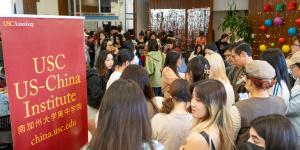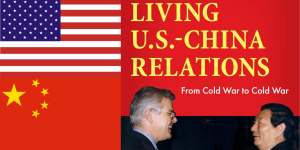Join us for a free one-day workshop for educators at the Japanese American National Museum, hosted by the USC U.S.-China Institute and the National Consortium for Teaching about Asia. This workshop will include a guided tour of the beloved exhibition Common Ground: The Heart of Community, slated to close permanently in January 2025. Following the tour, learn strategies for engaging students in the primary source artifacts, images, and documents found in JANM’s vast collection and discover classroom-ready resources to support teaching and learning about the Japanese American experience.
Changing Job and Housing Distributions under Marketization in Chinese Cities: A Study of Guangzhou
Based on large-scale surveys conducted in Guangzhou in 2001 and 2005, Si-Ming Li examines the extent to which the separation between residence and workplace has increased and whether the spatial mismatch hypothesis holds in the Chinese case.
April 19, 2007, 12:00 PM
University of California, Berkeley
Survey Research Center, 2538 Channing Way (corner of Bowditch and Channing Way)
Sponsors: Center for Chinese Studies, Survey Research Center
Si-Ming Li, Professor, Geography, Hong Kong Baptist University
In China, under the work-unit system, workers used to live in the work-unit compound where they worked. Yet with the economic and housing reforms, the work-unit system has undergone fundamental changes. Many work units have relocated the production plants to the suburbs and redeveloped the former work-unit compound in whole or in part to capitalize on rising land prices. Others may not survive the increased competition and have gone out of business. The almost perfect match between job and housing distributions is being torn apart at an increasingly rapid pace. The need for commuting is on the rise. Especially caught in the massive urban transformation are the low-income manual workers. The factories they used to work in have move out to the suburbs or simply disappeared. Yet they still have to reside in the old dilapidated housing provided by the work units. Unemployment is on the rise, although in some cases the work units the workers formerly worked in would still allow them to occupy the old and dilapidated work-unit housing in the former work-unit compound. A situation not unlike that of the spatial mismatch phenomenon in American cities (Kain, 1968; Houston, 2005) probably has emerged. Based on large-scale surveys conducted in Guangzhou in 2001 and 2005, this paper tries to examine the extent to which the separation between residence and workplace has increased and whether the spatial mismatch hypothesis holds in the Chinese case.
Featured Articles
Please join us for the Grad Mixer! Hosted by USC Annenberg Office of International Affairs, Enjoy food, drink and conversation with fellow students across USC Annenberg. Graduate students from any field are welcome to join, so it is a great opportunity to meet fellow students with IR/foreign policy-related research topics and interests.
RSVP link: https://forms.gle/1zer188RE9dCS6Ho6
Events
Hosted by USC Annenberg Office of International Affairs, enjoy food, drink and conversation with fellow international students.
Join us for an in-person conversation on Thursday, November 7th at 4pm with author David M. Lampton as he discusses his new book, Living U.S.-China Relations: From Cold War to Cold War. The book examines the history of U.S.-China relations across eight U.S. presidential administrations.




